Note #1: This post is not about the sentient alien symbiote. Sorry for any disappointment that might engender. Another time, perhaps.
Note #2: This post includes a discussion of snake venom, among other things, therefore it contains various serpentine photos. In addition, some links contained herein will lead to websites with such photos. Reader, beware!

I’ve been thinking about venom a lot lately, as one does in the period between Thanksgivng and Christmas. And not just snake venom, although that’s probably the first thing that came to mind when you saw the title of this post.
Lots of animals are venomous. I’m sure you already know that the platypus (Ornithorhynchus anatinus), is a venomous mammal, but did you know that only the males produce venom? Well, of course you did. But were you also aware that there are other venomous mammals, including: vampire bats (subfamily Desmodontinae) which secrete a substance in their saliva that prevents their victims’ blood from clotting; solenodons (family Solenodontidae) which bear a strong resemblance (see photo below) to the R.O.U.S.es in The Princess Bride, albeit shrunk down to a tiny size, and who deliver hemotoxic venom, i.e. blood clotting inhibition, via the bottom set of teeth; and slow (Nycticebus spp.) and pygmy slow (Xanthonycticebus pygmaeus) lorises. The last species are the only venomous primates — despite what you might think about certain politicians — and they deliver a toxic bite by licking a secretion from glands on their front legs which is then activated by saliva to produce something that’s chemically similar to cat dander, capable of producing anaphylaxis in susceptible humans.
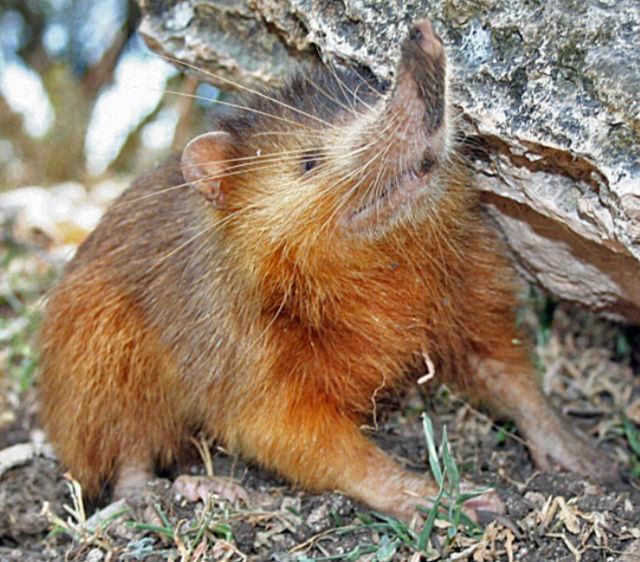
Then there are the venomous lizards. The most infamous of the lot is the Gila monster (Heloderma suspectum), found in Arizona and New Mexico, and the northwestern Mexican state of Sonora. Its bad-boy reputation may be well-deserved– it’s listed in the Guinness Book of World Records as the most dangerous lizard — but there’s only been one confirmed human fatality since 1930. It delivers venom via grooves in some of its lower teeth by chewing on its victim. Closely related to the Gila monster is the Mexican beaded lizard (Heloderma horridum). It’s deemed to be somewhat less dangerous, but has essentially the same venom delivery mechanisms.
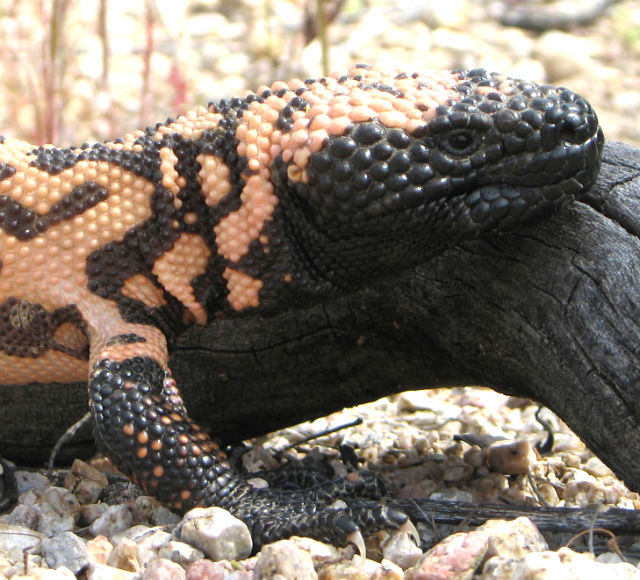
One other species of lizard has venom that’s generally considered to be medically significant: the Komodo dragon (Varanus komodoensis), the largest lizard on earth. I use the word generally because there’s still a bit of controversy about how this lizard’s venom plays into its behavior. The presence of venom glands was discovered only about twenty years ago; prior to that, it was assumed that victims of the lizard’s bite succumbed to sepsis due to bacteria in its mouth. Current thinking seems to be that a combination of hemotoxic venom and bacteria cause the death of the lizard’s prey, but the jury is still out as to which is the dominant factor. A good rule of thumb is simply to avoid getting bitten by any eight-feet-long lizards you might encounter.
By now, you’ll be pleased to know that there’s at least one group of reptiles that’s non-venomous: turtles. That’s not to say that they won’t still kill you, but that’s probably what you deserve for eating them.
Chelonitoxism is a type of food poisoning that comes from eating turtles — mostly marine species such as hawksbill and green sea turtles. It’s rare, but there’s no know antidote and the symptoms are pretty distressing.
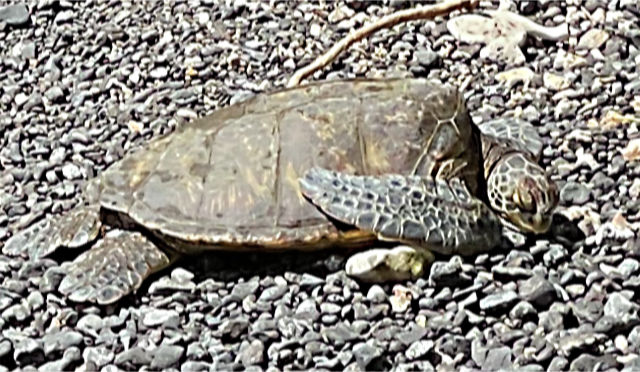
That’s a good segue to discuss the difference between venomous and poisonous. Even though the terms are often used interchangeably, their meanings are different. A good way to distinguish between them is to think about the difference between injestion and injection. Thus eating (or, sometimes, merely touching) a poisonous organism (such as a poison dart frog or an inky mushroom) will have potentially deady effects for the diner. On the other hand, the venom of a rattlesnake is harmless unless it’s introduced into the bloodstream via injection by the snake’s fangs.
Only the most pedantic will attempt to correct someone who refers to a poisonous snake, although we know that pedants do walk among us. But if you sense that a gentle bit of education will be received graciously, by all means offer it. And it’s worth keeping in mind that there are actually a few species of snake that are both poisonous and venomous.
Some Asian keelback snakes (genus Rhabdophis) produce their own venom, but their salivary glands secrete a poison that’s derived from the toads that make up a large part of their diet. One species, the tiger keelback, can actually spray the poison when threatened, with potential harmful effects on humans (as documented here). So, these snakes use poison as protection against predators, and as a weapon against their prey.
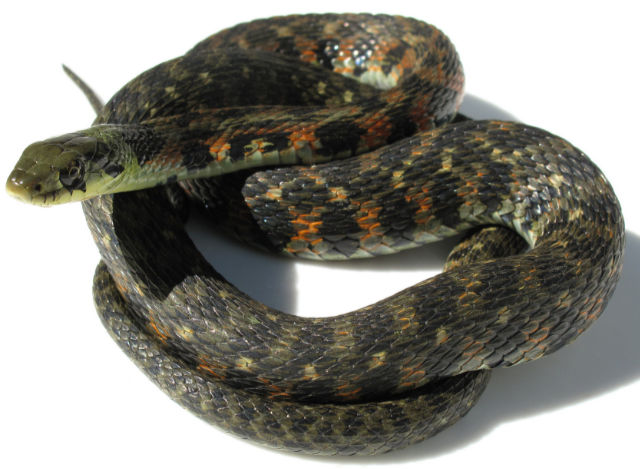
OK, it’s appropriate that I point out the potential pitfalls in relying on Wikipedia. I link to a lot of articles on that website for general information, but since it’s crowdsourced, one should read those articles with a critical eye. [Full disclosure: I’m a registered Wikipedia editor, one of several hundred thousand.] In the case of the link to the snake genus Rhabdophis above, the statement that the snakes use toad poison as their venom is incorrect. In fact, they rely on two separate glands, one called the nuchal gland where toad poison is sequestered and the other, a Duvernoy’s gland, secretes venom. The chemical building blocks of the poison and the venom are quite different. The lesson here is that any source of scientific information should be corraborated by other publications if said information is mission critical…which, of course, it’s really not for the purposes of this humble blog post. Still, I hate to mislead anyone, except when it serves my purposes. OK, just kidding. Probably.
No survey of venom in the animal kingdom is complete without a brief dive into the hideous world of spiders and insects (and, no, spiders are not insects).
I know some of you are creeped out by snakes; I’m not, but spiders are a whole different matter. I’m not even a fan of writing about them, but as a citizen scientist, I must set aside my prejudices, however wise and reasonable I know them to be, in order to present a facscimile of objectivity. (Nevertheless, no matter how many facts I study, I still consider the movie Arachnophobia to be a documentary, not a work of fiction. And don’t get me started on Eight Legged Freaks.)
Here’s the deal: every spider on the face of the earth — with two exceptions — is venomous. Venom is how they subdue their prey (the two exceptions are a couple of species in the order Uloboridae that wrap up their prey in silk and regurgitate digestive juices to soften the trapped organism, causing one to consider that perhaps death by venom isn’t such a bad way to go after all). This article via the National Library of Medicine will tell you everything you wanted to know about venomous spiders, and probably some things you’re better off not knowing (e.g. see priapism as a result of spider bite).
Although the overwhelming majority of spiders are venomous, only a few are medically significant…i.e. a danger to humans. But some of those species have few rivals in terms of said danger. I have a friend who was bitten by a spider a couple of decades ago and subsequently ended up on permanent disability due to pain that hasn’t abated to this day.
Moving on to insects, we are surely all aware that bees, wasps, hornets, and the like are venomous, as are the majority of ant species. For most people the effects of stings by these creatures fall into the category of irritants, but for an unfortunate segment of the population, anaphylaxis is a real threat. And, of course, if enough of any of these creatures get organized and attack as a group, they can inflict major damage, up to and including death, on any human. Red imported fire ants, harvester ants, and Africanized honey bees are prime examples of swarming dangers, although a single harvester ant can also ruin your day.
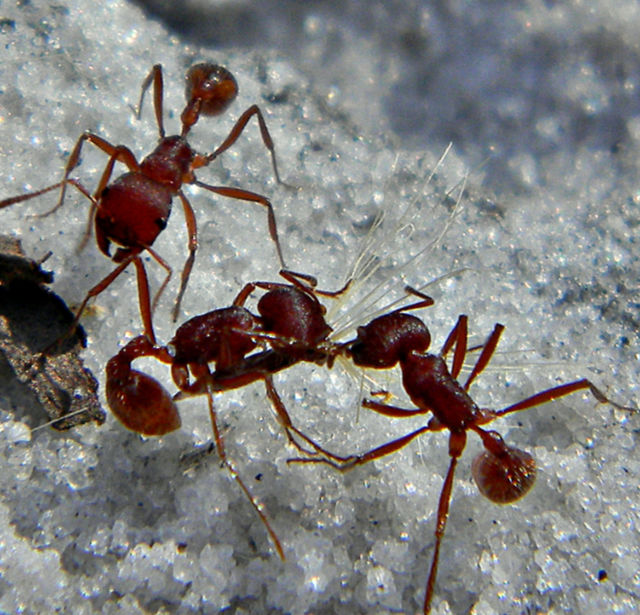
Some species of caterpillars have powerful venoms. The larval stage of the Southern flannel moth, the puss caterpillar (Megalopyge opercularis) and the assassin caterpillar (the larva of the giant silk moth [Lonomia obliqua]) are both fuzzy little dudes that pack a wallop through the slightest brush against their hair, the technical name for which is urticating hair or bristles. (Urticating means to cause stinging or itching; some plants, such as nettles, also have urticating bristles.) The former causes extreme pain; the latter — thankfully found only in South America — can kill a human.
I’ll mention one more venomous insect: the group called assassin bugs. They have potent venom that paralyzes and then liquifies their prey. This allows one to, well, suck out the insides of it prey by puncturing the exoskeleton with its long proboscis, as shown in this photo:
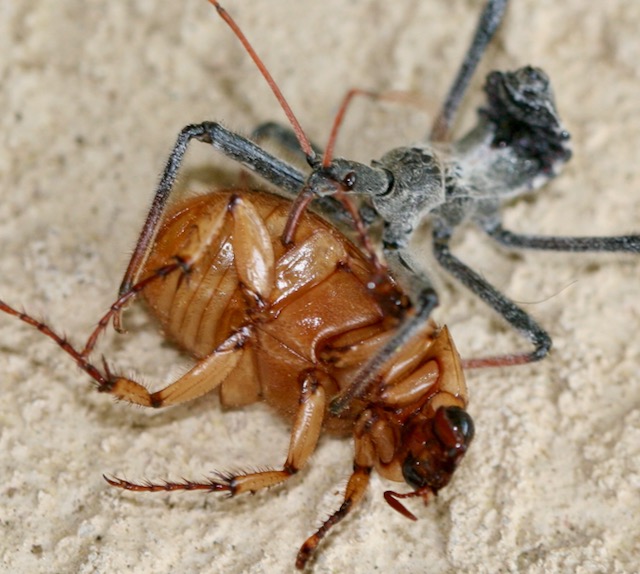
It occurs to me that we haven’t touched upon the venomous life that inhabits roughly 70% of the earth: ocean life. There’s actually too much to discuss in this post, given that I’ve exceeded my quota and your interest level by a few hundred percentage points. But let’s at least do a quick survey:
- Cone snails (family Conidiae) have some of the most potent venom of any creature on earth, although that potency varies among species of the family, with the most powerful belonging to those who prey on fish (piscivores).
- The Australian box jellyfish (Chironex fleckeri) has been responsible for multiple deaths of swimmers who encountered them in the water. Cardiac arrest can occur within minutes of envenomation.
- Stonefish (genus Synanceia) are ugly (an admittedly subjective judgment) fish whose spiny backs can dispense a potentially deadly venom to the unwary person who steps on them.
- Finally, I can’t leave this category without mentioning the venom of one sea creature with which I have a personal adversarial relationship: the sea urchin, and specifically the black long-spined urchin (Diadema antillarum). I had a run-in with one in 1979, just off the beach at Montego Bay, Jamaica. I was attempting (and failing) to windsurf and was washed against a shallow reef where my heel met an urchin in a most unpleasant fashion. A friend towed me to shore while I writhed on my board, and I was quickly given medical attention by a young Jamaican woman. I remember that she referred to me as “maama man,” which I assume was patois for “brave hero,” but later learned was more accurately translated as “white boy who cries like a little girl.” Anyway, let my experience be a cautionary tale and don’t step on a black urchin.

Surely by now you’ve realized that there are many living things on this earth that have the capability to wreak havoc on the human body. But here’s the thing: the vast majority of those creatures have no real interest in envenomating you unless you disrespect their personal boundaries. Venom is used defensively and to subdue prey…and none of the creatures discussed herein remotely consider humans to be prey.
You see, there’s a metabolic cost to the organism of producing venom. The magnitude of that cost is debatable, but it’s not zero. For example, the metabolism of some venomous snakes has been found to increase by 10%-to-40% following envenomation of prey. It stands to reason that venomous animals don’t dispense it lightly because (a) they have to work to rebuild the supply and (b) they don’t know how soon they’ll need it again.
This explains why a percentage of venomous snake bites to humans are “dry,” meaning that not venom is injected. (Again, that percentage is debatable, and, again, it’s not zero.) Snakes can regulate how much venom they dispense…and to dispel one myth, that applies even to newborn venomous snakes.
The vast majority of human envenomations by all of the creatures mentioned herein plus all the others not mentioned are as a result of touching, grabbing, stepping on, or otherwise threatening or handling them. I suspect many snake bites result from “hold my beer” activities by [mostly] guys who have an inflated and completely unmerited sense of their competence.
Unfortunately, envenomation of pets is far less a matter of bad intentions. Dogs just don’t know any better, unless they’ve had snake avoidance training. Cats are another story. Their hunting instincts are more likely to put them in danger (although their quick reflexes might also provide more protection). Some people think that cats can be trained in the same way that dogs are, but I’m skeptical. I’d love to hear a report of someone who has successfully trained their cat to avoid snakes.

Well, now that we’ve covered some of the more negative implications of venom, how about a little good news?
In the next installment of this short series, we’ll look at two major topics: what to do if you or your pet is bitten by a venomous snake, and some scientific and medical discoveries that prove that venom — or at least components of it — can extend or improve our lives. Riveting stuff, right? Stay tuned!
Discover more from The Fire Ant Gazette
Subscribe to get the latest posts sent to your email.

